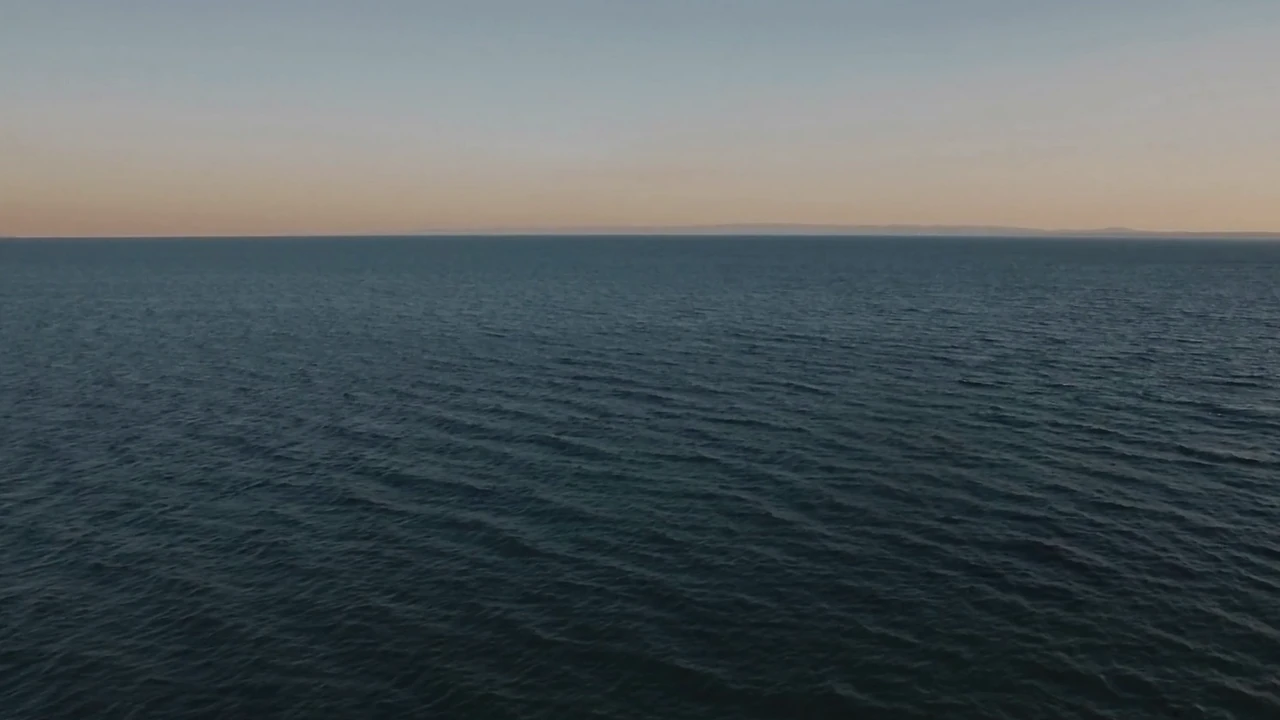For decades now, scientists at the National Oceanic and Atmospheric Administration (NOAA) have been tracking a mysterious whale song that sounds like the ghostly howls of a drowned tuba player. The sounds have been identified as belonging to a single whale, who sings unlike any other whale in the world.
Dubbed "52 Hertz" or "52 Blue" after the frequency range in which he typically sings, the animal has been called the loneliest whale in the world, since his love songs seem destined to go unanswered. Most other species of baleen whale, such as blue whales and humpbacks, sing at frequencies much lower, between the 15-25 hertz range.
Not only does 52 Hertz sing at a much higher frequency, but his calls are also shorter and more frequent than those of other whales, and demonstrates a lot of variability in general. It's as if he speaks his own language -- a language of one.
Even stranger, 52 Hertz does not follow the known migration route of any extant baleen whale species. Its movements have been somewhat similar to that of blue whales, but its timing has been more like that of fin whales. It is detected in the Pacific Ocean every year beginning in August–December, and moves out of range of the hydrophones in January–February
He sings alone and travels alone.
Could 52 Hertz be the last of a previously unknown species of baleen whale? That's one possibility. Whale biologists have also proposed that he could be malformed, or maybe a rare hybrid -- perhaps a blue whale and fin whale cross. Woods Hole Oceanographic Institution (WHOI) says that they've been contacted by deaf people who theorize that he may be deaf. Whatever the explanation, 52 Hertz is one of a kind.

There's also some evidence that he is maturing, since his voice has deepened slightly since the Navy first identified him in 1992, according to an article at the New York Times.
Although 52 Hertz's exact age is unknown, he continues to survive 20 years after his initial discovery. He was last recorded not far off the Aleutians and Kodiak Island, according to Alaska Dispatch -- which is also the closest he has come to land since first being tracked.
While whale lovers may lament the mournful tale of the loneliest whale in the world, there is some reason for hope, too. 52 Hertz seems to be healthy, in spite of his loneliness.
"The fact that this individual has been capable of existing in that harsh environment [for so many years] indicates there is nothing wrong with it," said Dr. Kate Stafford, a researcher at the National Marine Mammal Laboratory in Seattle, to the New York Times.
The whale's resilience could also be viewed as inspiration to anyone with a lonely heart. Despite 20 years of bellowing unanswered hymns into the cold echoes of the North Pacific, he sings on.
A famous Zen koan asks: What is the sound of one hand clapping?
Perhaps it resonates in 52 Hertz.




Wow! 52 Hertz is just my kind. To the thoughtful question of the Zen koan: the sound made by a single hand's clap is the sound of life. It shows that life is not about multiplicity; it exists on its own.
Please God, protect this beautiful creature from human predation.
Just how positive are they he's the only one. Maybe she hides well for good reason
thank you original members of Greenpeace for ending Russian whaling in the 1970s or we wouldn't have 52 Hertz now
maybe this sole creature is seeking something other then love.
not only has it been proven that great whales have the capability to be emphatic to the needs of even other species but show a much greater level of intelligence then even really thought. but what if in fat.. and this is a sci fi reply what if star trek movie hinted at something in fact deeper to the meaning of whales...
to discover if this is in fact a genetic mutant or a hybrid or a species we are seeing the last of should be something oceanographers should look into more... in my opinion the curiosity of this natural beauty is simply awesome
52 Hertz! This is your mother. Stop pranking these poor scientists. And come home.
Can't anything be done to bring 52 Hertz into contact with other whales--like replaying its songs at frequencies audible to other whales?
Are they sure it's a whale?
Not some foreign submarine or other vessel?
this article make it sound like lonely as a bad thing for the whale. we judged them based on our perception that loneliness is a bad thing and imposed that perception on whole lot of another creature. It could be heaven for them to be lonely, unlike human that always desperate even for little attentions.
Hey guys! We've been reading all your comments on this board about the 52 Hertz Whale and have been loving them! I too connected to this very special story, which is why I am currently working on a documentary that will physically search for 52, while exploring people's reactions. We are in production of this major documentary about the 52 Hertz Whale and would love for you to visit our Facebook page to sign up for our mailing list and learn more. Not only is the documentary about the whale, but it's about you folks who relate to this amazing story, and why we all do. Please 'like' us at: www.facebook.com/finding.52